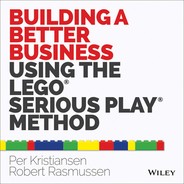Chapter 6
Building Knowledge—Giving Your Mind a Hand
Without the LEGO bricks, there would be no LEGO® SERIOUS PLAY® method. The bricks are to the process like sunlight is to a solar cell; without sunlight, no energy is produced. Yet many people who have not experienced LEGO SERIOUS PLAY find the process puzzling. They wonder why building and telling stories with LEGO bricks is a more effective use of the team's time than employing traditional methods for dealing with and finding solutions to complex problems and challenges—like merely talking.
It can also be a challenge to both understand and accept that children's preferred way to learning about the world—through concrete hands-on interaction—is indeed also a more efficient method for adults. Many find it inconceivable that such a learning process works more effectively than using formal abstract thinking and communication in the form for words, tables, spreadsheets, and graphs.
This chapter presents you with the theories that address three topics intimately connected to the use of the LEGO bricks:
- Building knowledge by building things in the world
- Concrete thinking versus formal abstract thinking
- Using the hand as the leading edge of the mind
Let's look at each in detail.
Building Knowledge by Building Things in the World
In short, we build knowledge by building things!
Try this: think about the aspects of your work that are especially motivating for you—the activities and events and people that give you energy and really engage you. While you think about this, take a pile of LEGO bricks to build a small LEGO model that expresses one of these aspects in a visual way. This undertaking will enable you to explain to a nine-year-old what you find highly motivating and energizing in your work. (See Figure 6.1.)
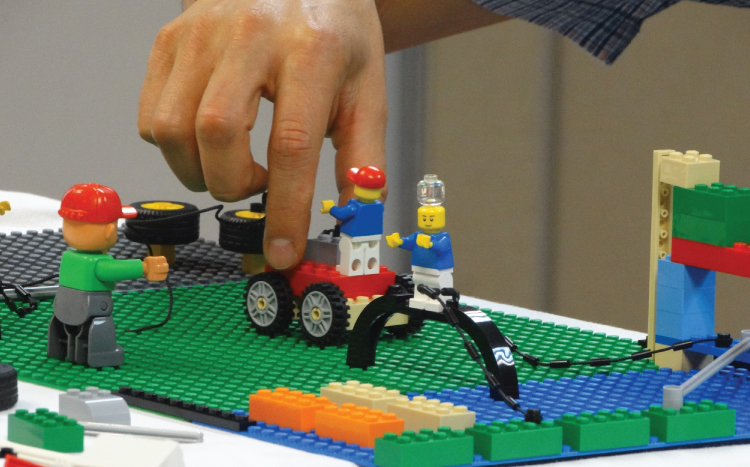
Figure 6.1 Don't Have a Meeting with Yourself About What to Build. Just Start Building and Let Your Hands Take Charge
Do not worry about making a plan before you start building. Just start putting some bricks together in a more or less structured way while simultaneously considering what it is you want the nine-year-old to understand. You have four to five minutes. Let your hands take over the control.
Now you have completed the two first steps in the LEGO SERIOUS PLAY Core Process. We have asked you a question (step 1) and you have built a LEGO model with meaning (step 2). It is time to move on to step 3—sharing the story. You can do this in one of two ways: (1) with someone else—a nine-year-old (as we suggested in the example), your spouse, or your colleague—or (2) with yourself. If you choose yourself, write down the main points of your story, or you may even opt to record it on your smartphone for review and perhaps to share it later on.
Let us move on to step 4 in the LEGO SERIOUS PLAY Core Process: learning and reflecting. This is your opportunity to provide the following information:
- My work is _______________.
- And what I like the most is _______________.
- The reason that part is motivating is _______________.
What you have experienced with this hands-on task is constructivism and constructionism at work. The building process helped and forced you to gather your thoughts about the topic. Some thoughts were likely very clear for you from the very beginning, while others were more vague and emerged during the building and/or the sharing process. But the process as a whole enabled you to pull together your sum of insights and communicate this to both yourself and others. You have built knowledge by building things.
Constructivism
Let us step back and look at renowned developmental psychologist Jean Piaget's theory of constructivism to explain what is happening when we “build knowledge by building things.”
Jean Piaget is the father of constructivism, perhaps best known for his stage theory of child development. But even more fundamental than this was his theory that children don't simply acquire knowledge bit by bit. Rather, they use their experience in the world to construct coherent, robust frameworks called “knowledge structures.” They aren't just passive absorbers of experience and information, but active theory builders.
In one of his more famous experiments, Piaget discovered that young children believe that water can change in amount when poured from a short, wide glass into a tall, thin one. These children have built a theory—which indeed, works most of the time—that states “taller means more.” They undoubtedly created this theory through many experiences (measuring children's heights back-to-back, building block towers, amount of milk in one glass) and developed it into a robust structure. Mere insistence could not convince these children that the amount of water did not change. In other words, you could not simply tell these children the right answer; they wouldn't believe you if you did. They would have to build a new, more sophisticated knowledge structure, taking into account the theory, again based on their experience, that “wider can also mean more.” This would help them consider that the amount of water does not change when it is poured from one glass to the other.
Thus, constructivism states that children—and really, anyone learning something for the first time—are not simply empty vessels into whom we can pour knowledge. Rather, they are theory builders who construct and rearrange that knowledge based on what they already know and have experienced.
Constructionism
Now let us turn our attention to Seymour Papert, a colleague of Piaget in the late 1950s and early 1960s. Though he agreed with Piaget's theory of constructivism, he wanted to extend the premise to the fields of learning theory and education.
Papert sought to create a learning environment that was more conducive to Piaget's theories. He saw conventional school environments as too sterile, too passive, too dominated by instruction; they didn't provide or promote an atmosphere that allowed children to be the active builders that he knew they were.
Papert eventually called his theory “constructionism.” It included everything associated with Piaget's constructivism, but went a step beyond. If we believe that we hold knowledge as structures based on our interaction with the world, then we can create knowledge faster and better (learning) when we are engaged in constructing a product or something external to themselves—a sand castle, a machine, a computer program, or a book. In short, “When you build in the world, you build in your mind.”
Since constructionism incorporates and builds upon Piaget's theory of constructivism, two types of construction are actually going on, each reinforcing the other. When people construct things out in the world, they simultaneously assemble theories and knowledge structures in their minds. This new knowledge then enables them to build even more sophisticated things out in the world, which yields still more knowledge, and so on, in a self-reinforcing cycle. This supports a central tenet of the LEGO SERIOUS PLAY method: learning happens especially well when we actively construct something physical/concrete that is external to us.
Papert first began thinking about constructionism in the late 1960s, after observing a group of students become deeply and actively engaged in creating soap sculptures in an art class over several weeks. Several things about the experience struck him: the children's level of engagement, the elements of creativity and originality in the actual products, how well the students were interacting and collaborating with one another, the longevity of the enterprise, and the sheer sense of fun and enjoyment that permeated the experience.
A mathematician by training, Papert could not help wondering why most mathematics classes were so unlike these art classes. Rather, he observed that math classes were dull, boring, unengaging, passive, and dominated by instruction—really, anything but fun. Why was this so? His own experience told him that mathematics could be exciting, beautiful, challenging, engaging, and every bit as creative as making soap sculptures. So why was something with so much potential being ruined for so many children?
Papert's contemplations about this observation led him on a many-year journey to design a more constructible approach to mathematics. He knew he would have to work with media more sophisticated and powerful than simple art materials. In the 1970s, Papert and his colleagues designed a computer programming language called Logo, which enabled children to learn mathematics by building pictures, animations, music, games, and simulations (among other things) on the computer.
Then, in the mid-1980s, members of his MIT (Massachusetts Institute of Technology) team developed LEGO TC Logo, which combined the computer language with the familiar LEGO brick. This new tool enabled children to control their LEGO structures by creating programs on the computer. The resulting behaviors of such machines can be arbitrarily complex. It was the repeated experience of watching children use these sorts of materials—not just in order to learn about mathematics and design, but to actually be mathematicians and designers—that led Papert to conclude: “Better learning will not come from finding better ways for the teacher to instruct, but from giving the learner better opportunities to construct.”1
Thus, the essential learning driver in the LEGO SERIOUS PLAY method is the concept of constructionism: learning by building something you can identify with and be proud of, and about which you can think, “This is my thing.” As Papert himself points out, “What we learn in the process of building things that we care about sinks much deeper into the subsoil of our mind than what anyone can tell us.”2
Constructionism involves two types of construction: when you construct things out in the world, you simultaneously construct knowledge in your head. Instructionism, on the other hand, occurs when somebody tells you what that person thinks you ought to know, and sometimes instructionism is the better way. For example, children can learn about the meaning of traffic lights in two ways. You can tell them that green means go and red means stop or you can send them out in traffic and learn by experimenting. Telling people that the LEGO bricks can be used either as metonym or metaphor is also instructionism. Instructionism is not always the wrong thing to do; it's somewhat like a strong medicine. If it comes at the right time and at the right dosage, then it can indeed be helpful.
Concrete Thinking versus Formal Abstract Thinking
It's time for a little exercise to really bring this topic to life. In Figure 6.2, you'll see a picture of what in the LEGO language is called a 2 × 4 stud brick. This is the quintessential LEGO brick.

Figure 6.2 LEGO Brick
The two-dimensional illustration in Figure 6.3 shows three of these bricks stacked on top of each other. They are arranged in such a way that if we view the stack from one side the illustration looks like A, and looking at it from a second side it looks like B. But it is the same small model in both cases.
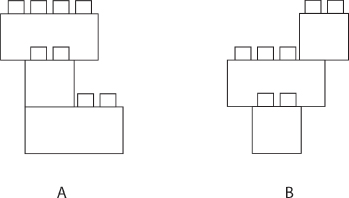
Figure 6.3 Two Views of the Same Stack of Three 2 × 4 Bricks
The task for you is to take a pen or pencil and—without using three real 2 × 4 bricks to help you—make a two-dimensional drawing of what this stack of three bricks looks like from a third side (not top and not bottom). Give yourself some time, because most likely you will find it quite challenging and maybe even impossible.
When you are done (or have given up), take three 2 × 4 bricks and stack them so they fit both the A and the B images—and maybe also your drawing. Do not feel discouraged if you did not get the drawing right the first time. Most of us are not able to do this without the help of the bricks unless we are trained in this kind of drawing technique. However, we should all be able to make the two-dimensional drawing if we can use (play with) the real 3-D bricks to assist our visualization. Thinking concretely with the bricks leads us much faster and more reliably to a formal abstract representation of the stack.
Let us look at another set of images that represent the same thing in three-dimensional and two-dimensional forms.
The image of the building—shown to the right in Figure 6.4—represents a three-dimensional model and provides a number of advantages for both thinking and communication. It is much easier for your mind to imagine how it would be to live in the building and to play around with alternatives. The formal abstract representation shown in the blueprint at the left merely becomes the documentation of the thinking process.
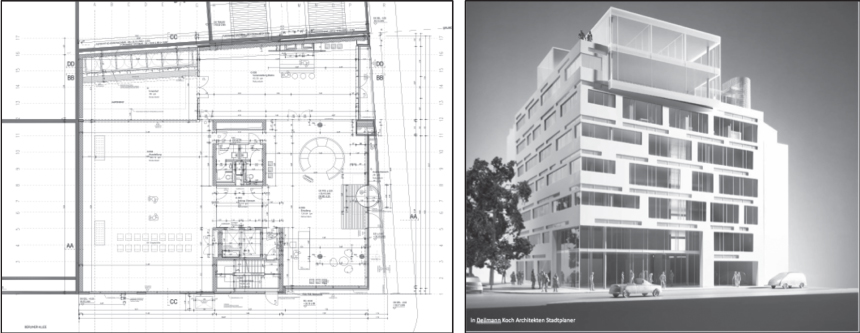
Figure 6.4 Making Two-Dimensional Representations of Things Is An Acquired Skill, Not Something that Is Natural for Us
With these two illustrations of the benefit of concrete thinking, let us return to Seymour Papert's work. Although his constructionism embraces and builds upon Piaget's constructivism, Papert eventually came to see some drawbacks to Piaget's stage theory—specifically, “his resistance to giving up the value system that places formal thinking ‘on top.’” According to Papert, “This resistance led [Piaget] to see concrete thinking as children's thinking, and so keeps him from appreciating the full breadth of his discovery of the ‘concrete’ as a universal form of human reason.”3 In other words, Piaget saw abstract thinking as a higher level of thinking than concrete thinking. Concrete thinking for him was merely a stage you passed through. Once you had passed that stage, there would be no need to ever revert to the concrete mode of thinking.
Papert came to view the notion of concrete thinking/hands-on thinking not as a stage that children outgrow, but rather as a style of thinking that has its benefits and uses, just as logical or formal thinking has its benefits and uses. In other words, unlike Piaget, he didn't view concrete thinking as the cognitive equivalent of baby talk. Rather, he saw and explained it to others as a mode of thinking complementary to more abstract, formal modes of thought. In Papert's view, it is a grave mistake to forsake or cast off concrete thinking in favor of purely abstract thought. Doing so would seal oneself off from valuable modes of thinking and pathways to knowledge that isn't as accessible by other means.
Using the Hand as the Leading Edge of the Mind
As we emphasized in Chapter 3, one of the needs that the LEGO SERIOUS PLAY method addresses is the unlocking of new knowledge. There is one angle that makes this challenge of unlocking knowledge even more daunting: we don't know most of what we know. In other words, we don't have a very thorough awareness of our own knowledge. The intricacies of our brains are partially to blame for this. As mentioned earlier, some of our knowledge is stored deeply in the brain, other elements are stored in different places in the cortex, or even the hippocampus. In other words, not everything is easily accessible.
The one comment from individuals that continues to stand out over our many years working with LEGO SERIOUS PLAY is: “I had no idea I knew this.”
People sometimes articulate it more specifically like this:
I had no idea of how to begin to answer the question when you posed it, so I did what you have told us to do when we don't know what to build—I just started building. All of a sudden I realized that I had the answer in the LEGO model right in front of me.
We usually hear these comments when the participants have had to build an answer to a particularly complex question—one for which they really felt there was no (obvious) answer. Yet, to their surprise, they often succeed in finding one.
This ability of the LEGO SERIOUS PLAY method to draw out unconscious knowledge has proven to be considerably more powerful than we originally assumed. And it has led us to place a strong emphasis on these two words: hand knowledge. We use this to refer to what your hands know but your brain isn't entirely conscious of. For example, when you drive a car, your hands perform a range of tasks without your even having to realize it. However, there is one major difference in this comparison: when you drive a car, you can deliberately make yourself conscious about the knowledge your hands are applying by default. But you can become aware of the hand knowledge we refer to in LEGO SERIOUS PLAY only through the process of building with the hands without too much preplanning.
To help individuals use their hands as the leading edge of their mind and draw out the knowledge and insights, we offer them this ground rule: “Trust your hands.” This is our way of encouraging them to let go and start building the answer to the question without having a plan for what to build and without knowing why they pick and put together the bricks they do. The “Trust your hands” ground rule is supplemented with a second ground rule: “Do not have a meeting with yourself about what to build; just start building.”
We experience the power of these ground rules when people, after having solved a problem by building, will say something along the lines mentioned above: “I had no idea how to begin, but then I did what you told us—start building—and all of a sudden the solution emerged through my hands.” This example is from a leadership development workshop in which the initial task was to unlock some of the participants' current insights about what is good leadership. The builder was stuck, yet all of a sudden the insight emerged as shown in Figure 6.5. The story is that good leadership is to know your leadership team's unique strengths and values and combine these in a way that brings together both the commonalities and the uniquenesses (i.e., the brick stack in the center).
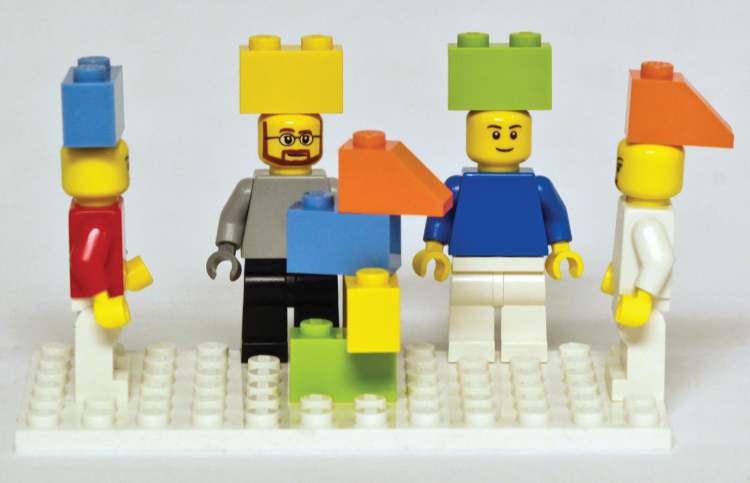
Figure 6.5 One Way of Representing Good Leadership
In our journey with LEGO SERIOUS PLAY, we have not come across even one in-depth research that fully explains the concept of hand knowledge as we have experienced it. And we believe that the evolutionary aspect also comes into play.
Evolution
There is well-grounded scientific evidence that points to the profound interdependence of the hand and mind. The work of anthropologists and paleontologists like Louis and Mary Leakey, their son Richard Leakey, Donald Johanson, and Sherwood Washburn shows very clearly the development of this relationship.
Starting about 3.2 million years ago, the human ancestor species we call Australopithecus afarensis (the “Lucy” skeleton) was the first to show clear bipedalism—that is, walking on two legs only. This meant that the other extremities (specifically, the hands) were freed up to be used for other things. Already pentadactyl—that is, five-fingered—the hand of Lucy also begins to show the first clear signs of a modern opposable thumb. This is the crucial development that makes the human hand's precision motor grip possible. Lucy's brain size was about 400 to 500 cubic centimeters. The opposable thumb appears in a more clearly modern form with the species we call Homo habilis. This species is dated to about 2.1 million years ago, and has a brain size of 600 to 700 cubic centimeters.
Homo habilis is a watershed in the human experience, because it is the first prehuman species also associated with what are clearly manufactured tools—chipped stone implements used for pounding, cutting, cleaving, and so on. As Frank Wilson, author of the book The Hand: How Its Use Shapes the Brain, Language and Human Culture, explains, “the whole list of recently acquired and uniquely human behavioral attributes must have arisen during the long process of brain enlargement that began with the expansion of novel and inventive tool use by Homo habilis.”4
The intimate link between the hand and the brain in human development appears clearly in modern human physiology. Canadian neurosurgeon Wilder Penfield (1891–1976) developed a map of the brain—depicted in Figure 6.6—that shows its proportions dedicated to controlling different parts of the body.
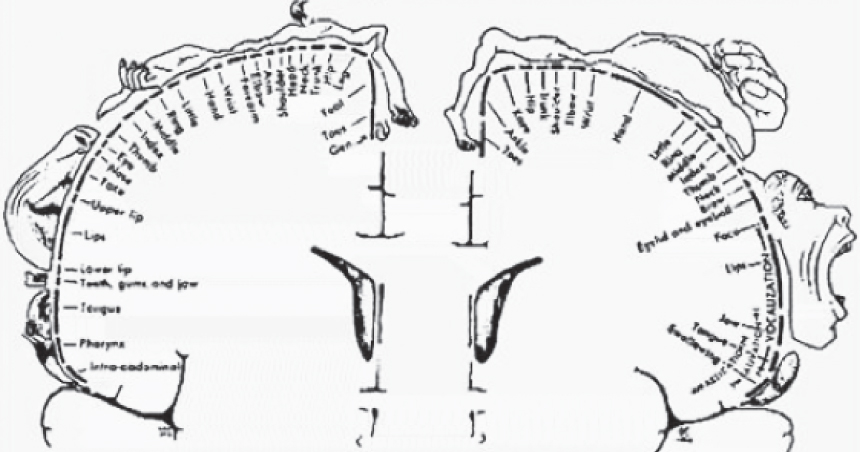
Figure 6.6 Penfield's Map of the Brain
Source: Reprinted from The Cerebral Cortex of Man by Wilder Penfield and Theodore Rasmussen, Macmillan Publishing, 1950.
What immediately strikes one is the enormous size of the part devoted to the hand. While this clearly shows the profound interconnection between the hand and the brain, what does this have to do with the higher mental processes of abstraction and reasoning?
As one of the fathers of our modern understanding of intelligence, Jean Piaget introduced the idea that intelligence grows from the mind's interaction with the world. Thus, the complex, abstract ideas such as time, causality, and space are all active operations that grow from the feedback processes between the living mind and the encompassing world. A proselytizer of Piaget's work, Hans Furth, argues that the key insight of the great psychologist's work is that “knowledge is an operation that constructs its objects.”5
As we know from the work of human paleontologists, the connections between the hand and the mind are central to human development. This fact, together with Penfield's and Piaget's scientific insights, would suggest that using the hand to manipulate and construct the world is not only a profoundly human thing; it's also a primal way that the brain uses to construct its own knowledge of the world. We evolved to live in and master a three-dimensional world—and our brain mirrors this. Even as you read this, your brain is navigating the text by trying to understand the letters as physical objects; it simply does not know another way of understanding them.6
Contemplating Giving Your Mind a Hand
The LEGO SERIOUS PLAY method is inseparable from the theory of constructionism and the hands-on building process. It's not a simple visualizing modeling tool; it's a way of thinking with objects and through our hands to unleash creative energies, modes of thought, and ways of seeing that most adults have forgotten they even possessed. The method stakes its reputation on the belief that adults can dust off those modes of concrete thinking and put them to use again—and that when they do, great benefits are in store. One might even argue that you could use other kinds of concrete building materials, and that your materials don't necessarily have to be LEGO bricks. That is true; however, the variety, flexibility, reusability, modularity, and quick use of the building system makes the LEGO bricks superior to any other known concrete material.
A business or company is so much more than a building and the people in it. It is a vast network of connections and complicated relationships on many different levels. Conveying such abstract relationships on paper through graphs, flowcharts, block diagrams, and so on often fails to capture the dynamic nature of the enterprise. While computer modeling and simulations are a step up from static models, these too are limited. It is often very difficult to comprehend the totality of these complex relationships. The LEGO SERIOUS PLAY method is a bold approach that applies the power of constructionism to the complexity of the business world, thereby making the abstract network of interrelationships that make up any business concrete, appropriable, and comprehensible.
In our experience, when a LEGO SERIOUS PLAY representation of a business like the one shown in front to the right in Figure 6.7 is constructed—not of the buildings, but of the business in a systemic sense—people see things they can't see when they look at the business described in words and diagrams as shown to the left top in Fig. 6.7. The access to a three-dimensional metaphorical model of their business and its landscape allows them to visualize strategies that were formerly opaque and closed off to them. They can see their enterprise in a more holistic sense, and can manipulate it, play with it, and ask all sorts of what-if questions by physically altering it. “What if our key supplier goes bankrupt?” “What if we relocated our marketing team to Asia?” “What if our sales suddenly doubled?”
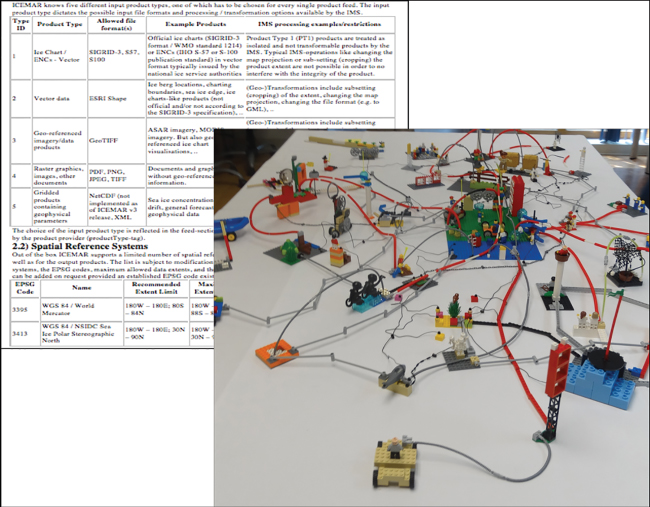
Figure 6.7 Two Different Ways to Represent a Business System
As with the earlier example of the 3-D building where the ultimate goal is to produce a blueprint, the ultimate goal of the 3-D business might be to produce a written plan like that shown to the left in Figure 6.7. The LEGO SERIOUS PLAY method is a faster and more effective way of getting there through an engaging process that compels everyone to lean in and contribute 100 percent.
